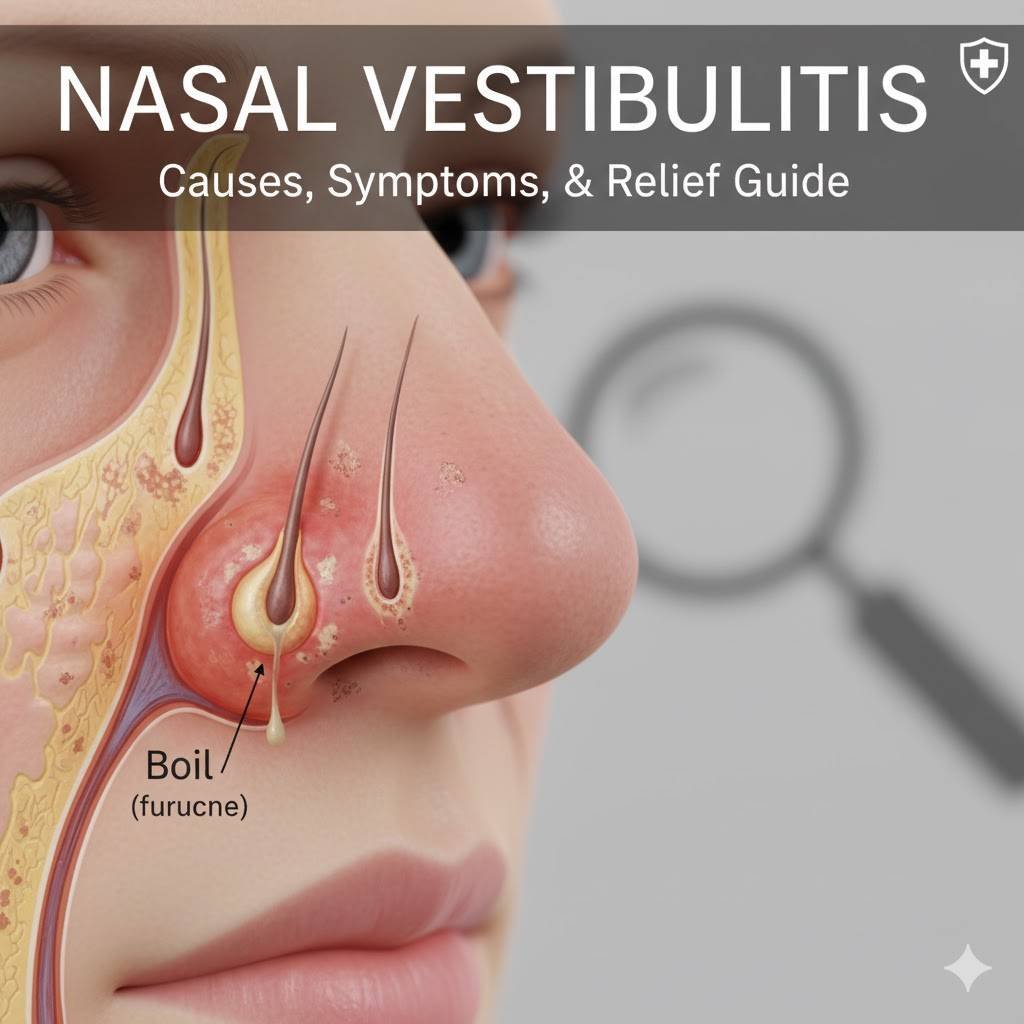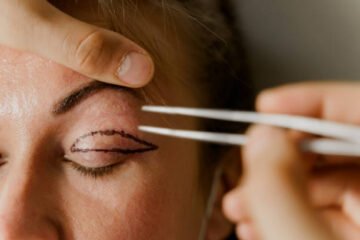You know that sting inside your nostril that shows up out of nowhere? The one that burns when you touch it, so of course you keep touching it?
That’s how nasal vestibulitis usually begins—quietly, then suddenly loud.
It isn’t glamorous. It doesn’t make headline news. But this little infection says a lot about how the smallest habits can trip up even the smartest immune system.
What Exactly Is Nasal Vestibulitis?
Think of your nose as a house with a front porch. That porch—the area just inside your nostrils—is the nasal vestibule. It’s where outside air, dust, and bacteria first meet your body’s defenses. The skin here is thin, full of hair follicles, and constantly exposed.
When that skin breaks, bacteria slip in.
The result? Nasal vestibulitis, a local infection that can look like a pimple, feel like a bruise, and hurt more than you’d expect.
Most of the time, it’s caused by Staphylococcus aureus—a bacterium so common that about 30 percent of people carry it without knowing. Usually, it minds its own business. But give it an opening, and it moves fast.
Why Knowing the Causes Matters
Sure, antibiotics clear it up. But unless you understand what started it, you’ll probably meet it again. The real trick is spotting the daily habits, the little mechanical stresses, and the environmental nudges that let infection sneak in.
Let’s unpack them one by one.
1. Nose Picking and Habitual Touching
Nobody likes to admit it, but everyone does it—especially when allergies hit or the air turns dry.
Each pick creates microscopic tears in that fragile skin. Bacteria from your fingertips jump in, and boom: an inflamed, throbbing nostril.
Doctors call it traumatic vestibulitis, though “self-inflicted” might be closer to the truth.
Simple fix: keep tissues handy, use saline spray for dryness, and break the finger-to-nose habit.
2. Hair Plucking and Aggressive Grooming
Those coarse nose hairs aren’t there to embarrass you—they’re filters.
When you pluck them, you leave open follicles behind. Those tiny pits fill with bacteria and pus faster than you can say “ouch.”
Use blunt-tip scissors or an electric trimmer instead. A neat trim keeps airways clear without ripping out protective hairs by the root.
3. Chronic Colds and Allergies
Frequent colds or sinus flare-ups mean constant wiping and blowing. That friction irritates the vestibular lining, turning it red and raw. Add mucus carrying bacteria, and infection finds a home.
People with seasonal allergies or chronic sinusitis are prime candidates. They live in a loop: irritation → inflammation → infection → antibiotics → dryness → repeat.
Breaking that cycle often means managing allergies early and moisturizing the nasal lining with saline gels.
4. Dry Air and Decongestant Sprays
Modern heating and air conditioning suck moisture from the air. So does that decongestant spray you reach for every night.
When nasal tissue dries out, it cracks—like chapped lips inside your nose. Those cracks invite Staph aureus.
If you live in a dry climate or keep the heat high, add humidity. A bedside humidifier or plain saline mist works wonders. And use medicated sprays only as directed—usually no more than three days in a row.
5. Cosmetic Procedures and Piercings
Piercing the nose introduces metal and bacteria into one of the most vascular spots on your face. Even a sterile needle can’t protect against the post-piercing habit of touching or twisting jewelry.
Waxing or laser hair removal near the nostrils can have the same effect—microscopic trauma plus bacteria equals infection.
Good after-care (saline soaks, gentle cleaning, no fiddling) makes all the difference.
6. Compromised Immunity
If you have diabetes, take steroids, or live with any condition that slows healing, you’re playing defense with one arm tied behind your back.
For these folks, nasal vestibulitis isn’t just annoying—it can spread. Sometimes it moves onto the upper lip or cheeks, becoming facial cellulitis that needs prescription antibiotics.
Doctors often swab chronic cases to check for antibiotic-resistant strains like MRSA. Early detection prevents bigger problems.
7. Environmental Dust and Poor Hygiene
Construction workers, bakers, farmers—anyone breathing dust day after day—irritate their nasal lining constantly. Without regular cleaning, dust plus sweat turns the vestibule into a petri dish.
Rinsing with sterile saline once or twice daily flushes out particles and bacteria. It’s cheap, quick, and surprisingly effective.
8. Overlooked Habits and Hidden Triggers
A few more sneaky culprits:
-
Frequent nose wiping with rough tissues (the friction alone can abrade skin).speromagazinehub.com
-
Unclean makeup applicators brushing near the nostrils.
-
Shared towels or razors, which spread bacteria.
-
Stress, which quietly lowers immune response and slows healing.
Each of these seems minor—until you stack them up. Then the vestibule waves a white flag.
Quick Recap Table
| Common Cause | How It Hurts the Vestibule | Simple Prevention |
|---|---|---|
| Nose picking | Micro-tears introduce bacteria | Keep fingers out, use tissues |
| Hair plucking | Inflamed follicles | Trim, don’t pluck |
| Chronic colds | Constant friction, mucus exposure | Manage allergies, use saline |
| Dry air/sprays | Cracks in mucosa | Humidify, limit sprays |
| Piercing/cosmetics | Trauma, contamination | Sterile tools, good after-care |
| Weak immunity | Slower healing | Control blood sugar, treat early |
| Dust exposure | Irritation, contamination | Saline rinse, masks |





